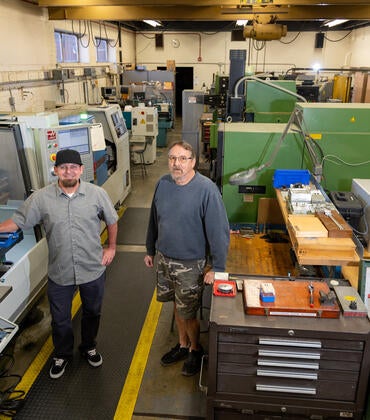COVID-19 has dramatically changed our everyday routines in ways that were unimaginable just a few months ago. With multiple changes occurring simultaneously in society, we often find ourselves playing catch up and feeling the need to constantly keep up with the fast-evolving information about the novel coronavirus.
“This is anxiety provoking,” said Dr. Adwoa Osei, an assistant clinical professor of pediatrics at the School of Medicine at the University of California, Riverside. “Some element of stress is helpful and protective, but when it is unending, it can begin to impact how we think, feel, and see things. Being responsible for the care of others can make stress and anxiety worse.”
She added we are all prone to anxiety when feeling vulnerable.
“People who are faced with the scarcity of basic needs like food, shelter, and safety are especially prone to anxiety now,” she said. “Losing a job, being an ethnic minority, having a death in the family, caring for a child or a loved one with special or medical needs, lack of social connections and support make caregivers vulnerable to anxiety.”
Dr. Osei offered a few tips for coping during these stressful and anxious times.
Making space to acknowledge feelings and thoughts
Stress and anxiety can show up in different ways, Dr. Osei explained. These can be physical, resulting in sleep problems, muscle tension, upset stomach, and headaches. They can affect thinking processes, resulting in poor concentration and an inability to complete tasks. Further, they can be psychological, resulting in feelings of frustration or anger and uncontrollable worry.
“If you notice any of these changes, you could be feeling stressed or are anxious,” she said. “Pay attention to your body and how you feel. Notice how you are interacting with those around you.”
Write down the anxieties
Dr. Osei recommended making a list of what makes you anxious.
“For each worry, try to come up with the next right thing to do,” she said. “If you are unable to come up with a next step plan, ask yourself from whom and where you can get help. Identify a support network for yourself.”
Build a box of tools
Dr. Osei offered some tools to help cope with anxiety and stress:
- Sleep — Keep a regular and consistent bedtime, aim for seven to nine hours of sleep at night.
- Nutritious meals — Try to keep consistent and regular mealtimes. Keep it healthy.
- Movement and or stretching — Engage in any kind of movement, such as dance, stretching exercises, yoga, and jump rope, which makes you sweat for about 30 minutes to an hour per day.
- Relaxation skills — Deep breathing, muscle relaxation, visual imagery, and personal timeouts.
- Meaningful connections — Identify stable, supportive, and nurturing relationships, and reach out.
- Find routine and structure — Set wake and bed times, and set blocks for screen and outdoor time.
- Find meaning — Some ways to achieve this are through prayer, nature walks, yoga, meditation, journaling, and music. Try to make them repetitive.
- Find fun activities — Doodling, family games, backyard sports, reading, and audio books are some options.
Caring for children
Dr. Osei advises parents to work with children to identify supportive, nurturing, and stable relationships.
“Help them identify the helpers outside your home — such as, doctors, nurses, and teachers,” she said. “Remind them that there are people in the community looking out for their well-being. Remind them it's OK to feel overwhelmed. Help them focus on the constants around them — nature and your care and love for them. Give them some control at home; for example, have them pick songs to wash hands to, plan meal menus, decide their help with cleaning. For older kids, give them options to offer help to the community from your home. Give children space to vent and unwind. For children with special needs, prioritize routine and calming skills.”
The C word
Dr. Osei recommends answering children’s questions about the coronavirus directly and clearly.
“Give them honest, concise answers,” she said. “Too much information can be overwhelming. Admit what you don’t know, but let them know you are working on finding answers. Younger kids do well when stories and pictures are used to explain what is being said. For adolescents, admit what you don't know but provide a way for both of you to gain more information and knowledge.”





